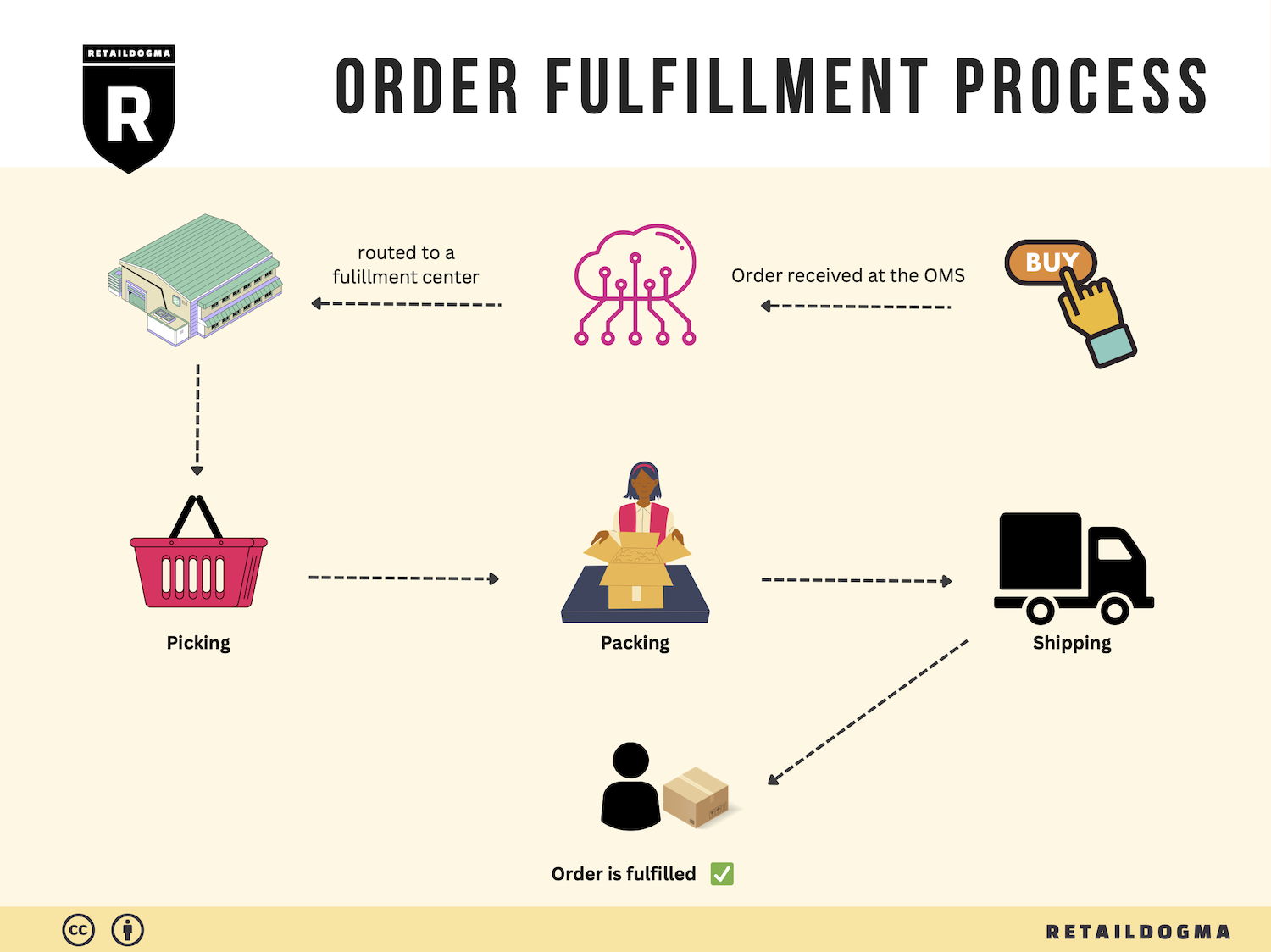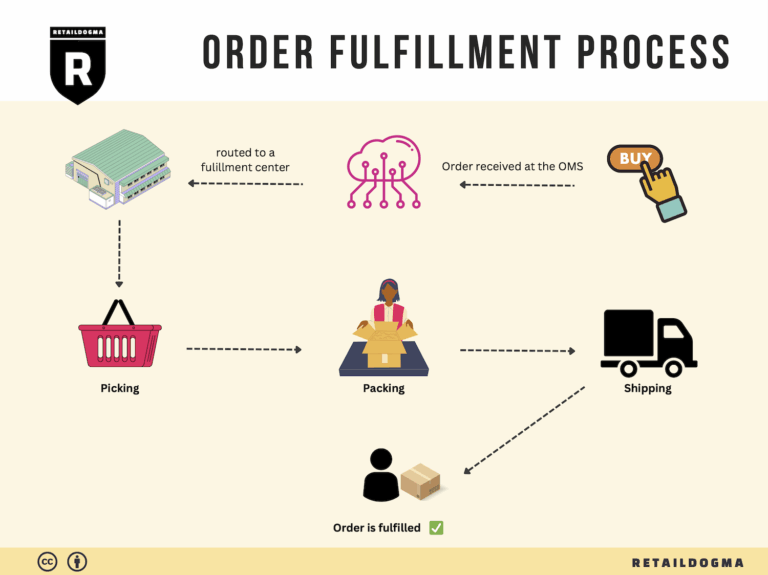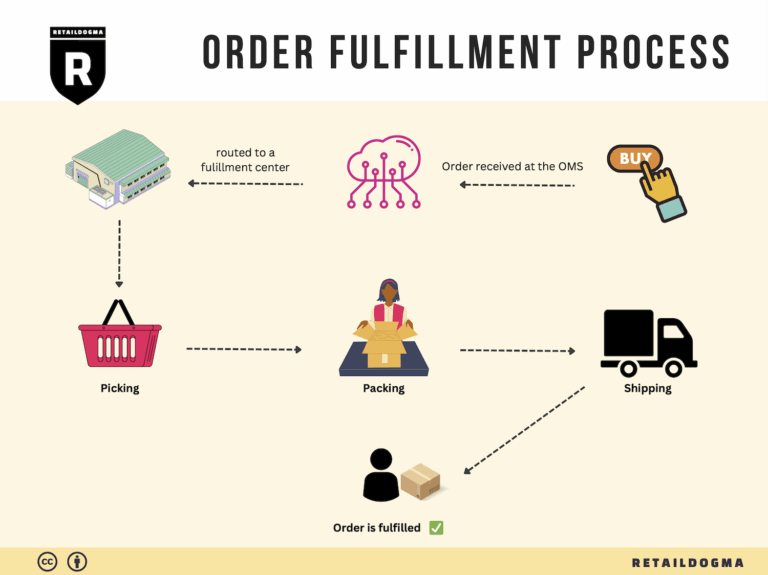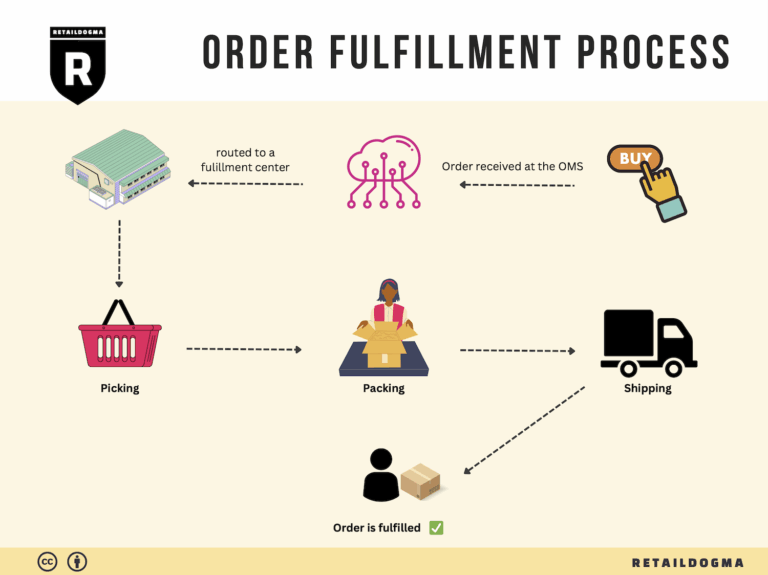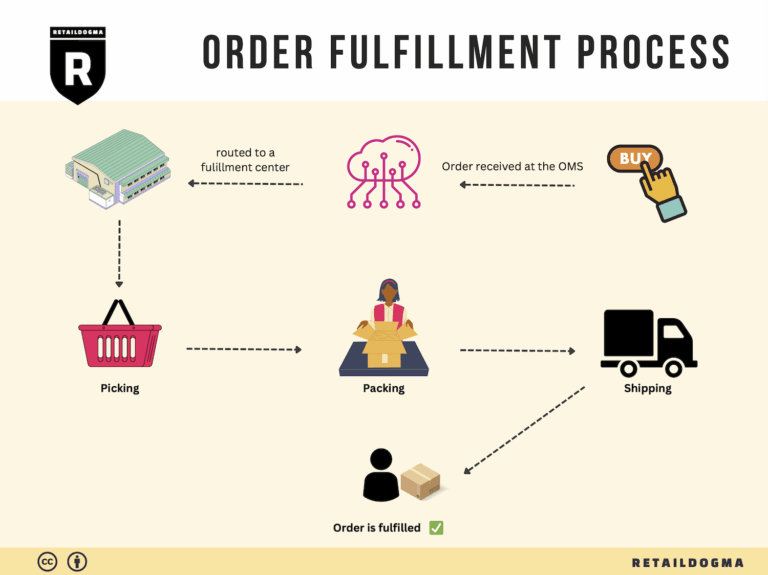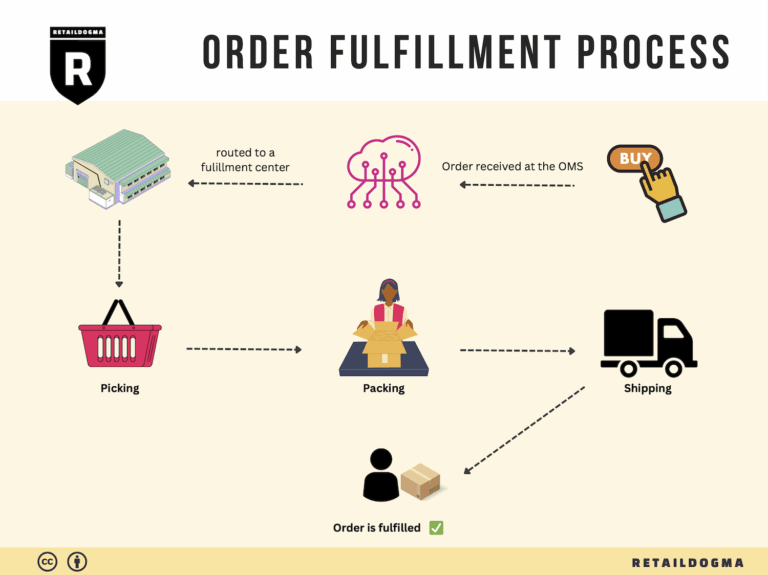How Order Fulfillment Works: A Step-by-Step Guide for Businesses
What is E-commerce Fulfillment? An Introduction for Growing Businesses
As your e-commerce business begins to grow, you may find yourself grappling with a common challenge: the overwhelming task of packing and shipping orders. What once felt manageable can quickly spiral into a logistical nightmare, consuming valuable time and resources that could be better spent on scaling your business. This is where understanding e-commerce fulfillment becomes crucial.
Defining E-commerce Fulfillment
At its core, e-commerce fulfillment is the process of getting a product into the hands of your customer. This encompasses everything from receiving inventory, picking and packing orders, to shipping them out and managing returns. For growing businesses, mastering fulfillment is not just about efficiency; it’s about creating a seamless customer experience that can elevate your brand and increase customer loyalty.
What This Guide Will Cover
In this guide, we will explore the various models of e-commerce fulfillment, including Third-Party Logistics (3PL) and Fulfillment by Amazon (FBA). Each model has its unique advantages and can cater to different business needs, whether you are a small startup or an established brand.
We will delve into core fulfillment services such as inventory management, order processing, and shipping solutions, which are critical for streamlining your operations. Understanding these services will help you identify what your business specifically requires as you scale.
Choosing the right fulfillment partner is another key aspect we will address. With numerous options available, knowing what to look for—such as integration capabilities with your e-commerce platform, pricing structures, and customer service—will empower you to make informed decisions that align with your growth strategy.
Pricing is a significant factor in fulfillment, and this guide will help you navigate the costs associated with different fulfillment models and services. We will provide insights on how to evaluate pricing to ensure that your logistics operation remains profitable.
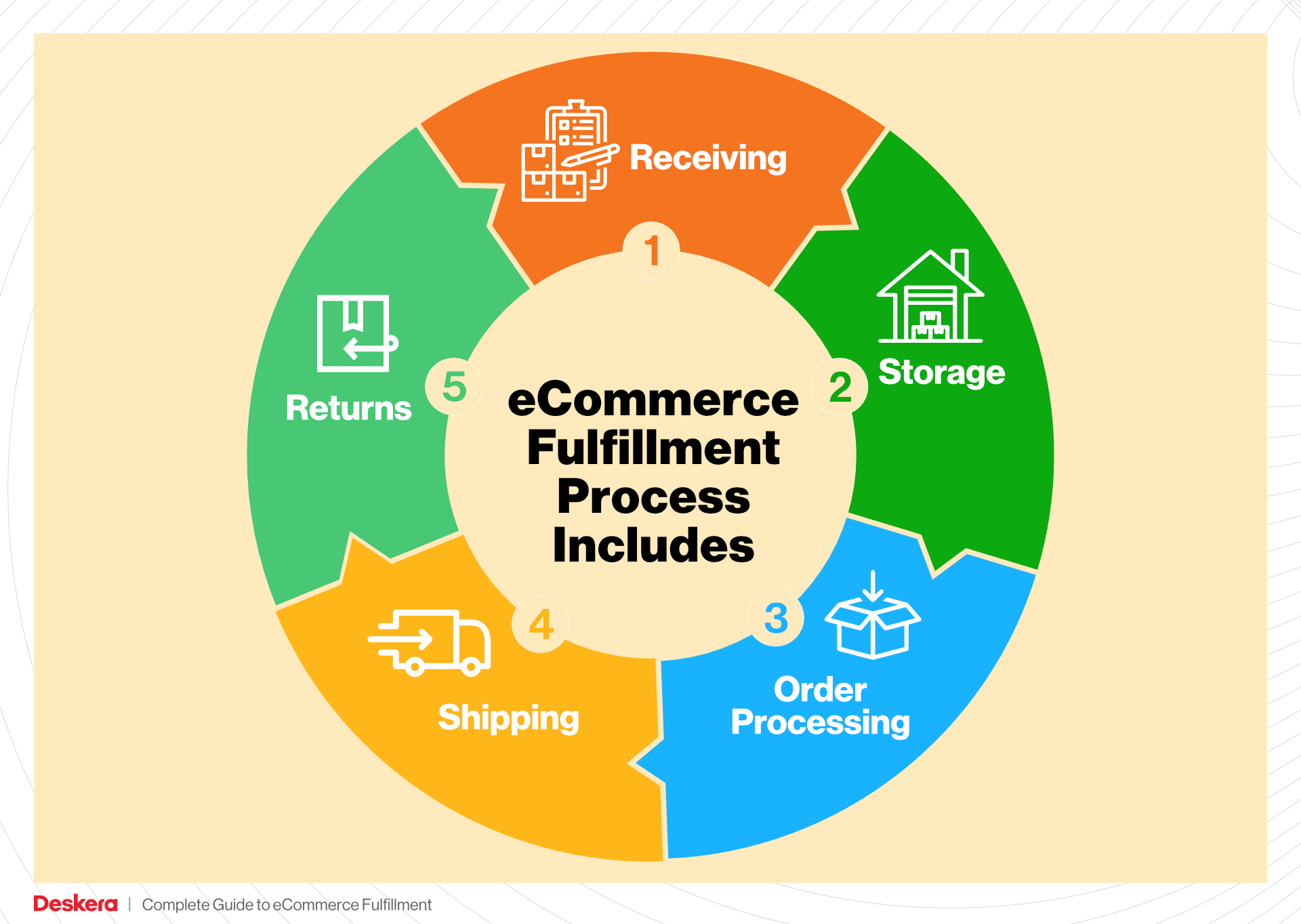
Empowering Smart Decisions
Ultimately, the goal of this guide is to empower you to make smart, strategic decisions about your logistics and fulfillment processes. By understanding the intricacies of e-commerce fulfillment, you can choose the right partners and services that will not only support your current operations but also set the stage for sustainable growth in the future. With the right knowledge and tools, you can transform fulfillment from a daunting task into a streamlined process that enhances your business’s efficiency and customer satisfaction.
What You’ll Learn In This Guide
- What is E-commerce Fulfillment? An Introduction for Growing Businesses
- The Order Fulfillment Process: From ‘Buy’ Button to Customer’s Door
- Comparing Fulfillment Models: In-House vs. 3PL vs. Dropshipping
- A Deep Dive into Amazon FBA: Pros, Cons, and Who It’s For
- Core Services Offered by Fulfillment Centers
- How to Choose a Fulfillment Partner: A 6-Point Checklist
- Understanding Fulfillment Pricing: A Breakdown of Common Fees
- Frequently Asked Questions (FAQs) about Fulfillment
- Conclusion: Is Outsourcing Fulfillment the Right Move for Your Business?
- Important Disclaimer
The Order Fulfillment Process: From ‘Buy’ Button to Customer’s Door
1. Receiving Inventory
The order fulfillment process begins with receiving inventory, a critical step that establishes the foundation for effective logistics. When products arrive at your fulfillment center, they must be logged into your system. This process typically involves checking the shipment against the purchase order to ensure that the right quantity and type of products have been delivered. A key term associated with this step is SKU (Stock Keeping Unit), a unique identifier for each product that facilitates tracking and management.
Proper inventory management is essential because it affects not only the accuracy of order fulfillment but also inventory levels and financial reporting. Any discrepancies during the receiving stage can lead to stockouts or overstock situations, both of which can adversely impact customer satisfaction and operational efficiency. By implementing a robust receiving process with detailed checks and accurate logging, businesses can set themselves up for a smoother fulfillment experience down the line.
2. Warehouse Storage
Once inventory is received, the next step is warehouse storage. This involves organizing products within the fulfillment center in a manner that maximizes space and improves picking efficiency. Products should be stored based on factors such as size, demand, and shipping frequency. ABC analysis is a common inventory categorization technique used here, where products are classified into three categories: A (high-value items), B (moderate value), and C (low-value items).
Effective warehouse storage is crucial for quick access to products during the picking stage. A well-organized warehouse minimizes the time and effort required to locate and retrieve items, thereby reducing overall fulfillment time. As e-commerce businesses scale, optimizing warehouse layouts and employing technology such as warehouse management systems (WMS) can significantly enhance operational efficiency.
3. Order Picking
Order picking is the process of selecting items from the warehouse to fulfill customer orders. This step is vital as it directly impacts the accuracy and speed of order fulfillment. Pick lists, which are documents or digital displays that outline the items to be retrieved for each order, guide staff in this process. There are various picking methods, including single order picking, batch picking, and zone picking, each suited for different types of operations.
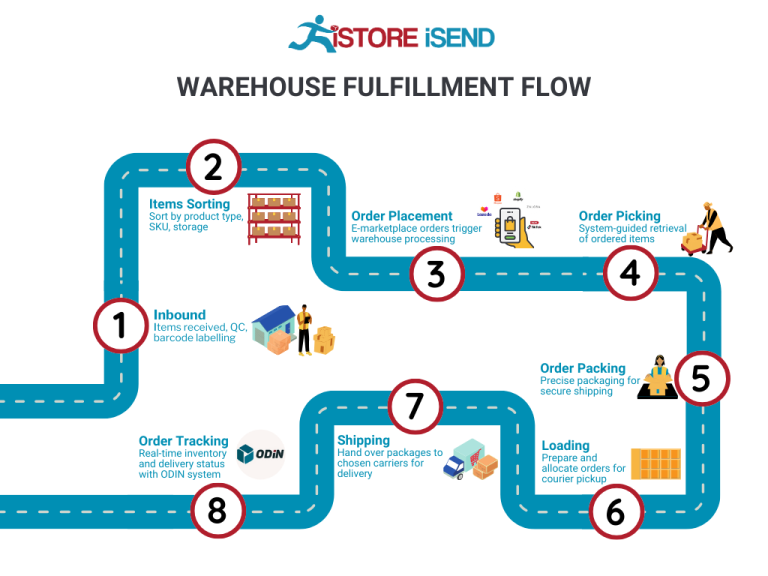
Accuracy in order picking is essential to prevent errors that can lead to customer dissatisfaction and increased return rates. Implementing technology such as barcode scanners can enhance the picking process by ensuring that the correct items are selected and that the inventory is updated in real-time. Efficient picking not only improves customer satisfaction but also optimizes labor costs and time management within the fulfillment center.
4. Order Packing
After items are picked, the next step is order packing. This involves securely packaging the products to ensure they arrive at the customer’s door in perfect condition. Proper packing materials, such as bubble wrap, packing peanuts, and sturdy boxes, are essential to protect the items during transit. A crucial term related to this step is packing slips, which are included in the package and detail the contents of the order.
Order packing is significant because it plays a critical role in the customer experience. Well-packed orders reflect a brand’s attention to detail and commitment to quality. Additionally, optimizing packing processes can reduce shipping costs by minimizing package size and weight, which is particularly important for maintaining profitability in competitive e-commerce markets.
5. Shipping & Delivery
The final step in the order fulfillment process is shipping and delivery. Once the order is packed, it is labeled with shipping information, including tracking numbers, and handed off to a carrier. Effective shipping strategies involve selecting the right carrier based on factors like cost, speed, and reliability. Carrier partnerships are essential to ensure that you can offer competitive shipping options to your customers.
Shipping and delivery are critical components of customer satisfaction. Delays or issues during this stage can lead to negative reviews and lost business. By leveraging technology to automate shipping processes and using analytics to optimize shipping routes and methods, businesses can enhance delivery performance. Ultimately, the goal is to provide customers with accurate delivery timelines and a seamless experience from the moment they click the ‘buy’ button to the time their order arrives at their doorstep.
Comparing Fulfillment Models: In-House vs. 3PL vs. Dropshipping
Comparison of Fulfillment Models
| Model | Who Handles Inventory | Best For (Business Stage) | Key Advantage | Key Disadvantage |
|---|---|---|---|---|
| In-House Fulfillment | Business Owner | Startups and Small Businesses | Full control over inventory and fulfillment processes | High operational costs and resource-intensive |
| Third-Party Logistics (3PL) | 3PL Provider | Growing Businesses | Scalable solutions with reduced overhead costs | Less control over inventory and fulfillment speed |
| Dropshipping | Supplier | Startups and Niche Markets | Low upfront investment and risk | Lower profit margins and reliance on supplier performance |
In-House Fulfillment
In-house fulfillment involves managing the entire inventory and logistics process within your own business. This model is often adopted by startups and small businesses that want to maintain full control over their inventory, shipping, and customer interactions. By handling fulfillment in-house, businesses can tailor their processes to meet specific customer needs and brand standards. This control can lead to improved customer satisfaction, as businesses can ensure that products are packed and shipped according to their own quality standards. However, the downside of this model is that it can be resource-intensive. Businesses must invest in warehousing, staffing, technology, and logistics management, which can strain finances, especially for small operations. As order volumes increase, the complexity of managing in-house fulfillment can overwhelm resources, making it a challenge to scale effectively.
Third-Party Logistics (3PL)
Third-party logistics (3PL) providers take over the logistics functions of businesses, including warehousing, inventory management, order processing, and shipping. This model is ideal for growing businesses that need to scale their operations without incurring the high costs associated with in-house fulfillment. By outsourcing these functions, companies can focus on core business activities such as marketing, product development, and customer service. 3PL providers often have established relationships with carriers, which can lead to discounted shipping rates and faster delivery times. Additionally, they offer scalability, allowing businesses to adjust their logistics capabilities based on demand fluctuations. However, one of the key disadvantages is the loss of direct control over inventory and fulfillment processes. This can lead to potential delays or errors that are outside the company’s immediate control, impacting customer satisfaction if not managed properly.
Dropshipping
Dropshipping is a fulfillment model where the retailer does not keep goods in stock but instead transfers customer orders directly to a supplier or manufacturer, who then ships the products directly to the customer. This model is particularly attractive to startups and niche market businesses due to its low upfront investment and minimal financial risk. Retailers are not required to maintain inventory, which means they can offer a wider range of products without the overhead costs associated with warehousing. Additionally, dropshipping allows for flexibility in product offerings and can be a great way to test new markets or products. However, the key disadvantage is the lower profit margins, as suppliers typically charge higher prices for their products. Furthermore, dropshipping relies heavily on supplier performance; any delays or issues on the supplier’s end can negatively impact the retailer’s brand reputation and customer satisfaction.
Conclusion
Choosing the right fulfillment model is crucial for e-commerce business owners looking to scale effectively. Each model—In-House Fulfillment, Third-Party Logistics, and Dropshipping—offers unique advantages and challenges. By evaluating your business stage, operational capabilities, and customer expectations, you can make an informed decision that aligns with your growth objectives and operational strategy. Understanding the nuances of each fulfillment model will empower you to streamline your supply chain and enhance your overall customer experience, ultimately driving your business forward.
A Deep Dive into Amazon FBA: Pros, Cons, and Who It’s For
Understanding Fulfillment by Amazon (FBA)
Fulfillment by Amazon (FBA) is a service provided by Amazon that allows sellers to store their products in Amazon’s fulfillment centers. Amazon takes care of storage, packaging, and shipping of products on behalf of the sellers. This means that when a customer orders a product, Amazon handles the entire logistics process, from picking the item from the warehouse to shipping it directly to the customer’s doorstep. This service not only streamlines the fulfillment process for sellers but also offers various advantages that can significantly impact a seller’s business.
How FBA Works
-
Setup and Inventory Management: Sellers sign up for FBA through their Amazon Seller Central account. After setting up their account, they can create FBA listings and ship their products to Amazon’s fulfillment centers. Sellers need to ensure their products comply with Amazon’s guidelines and packaging requirements.
-
Storage: Once the products arrive at the fulfillment center, Amazon takes charge of storage. Sellers are charged based on the space their products occupy. This can be beneficial for businesses looking to minimize their warehouse costs.
-
Order Processing: When a customer places an order, Amazon’s systems automatically manage the picking, packing, and shipping of the item. Products fulfilled by Amazon are eligible for Prime shipping, which can enhance sales potential.
-
Customer Service and Returns: Amazon also handles customer service inquiries and returns for FBA products, which can save sellers considerable time and effort.
-
Payment and Fees: Sellers receive payments for their sales, minus FBA fees, which are determined by the size and weight of the items sold.
Pros of Using FBA
Prime Eligibility
One of the most significant advantages of FBA is that it allows sellers to offer their products with Amazon Prime eligibility. This means that Prime members can receive their items with free two-day shipping, a highly attractive feature that can increase sales.

Customer Trust
Products fulfilled by Amazon often benefit from the trust and reliability associated with the Amazon brand. Customers are more likely to purchase items that are marked as FBA because they have confidence in Amazon’s fulfillment standards, including shipping speed and customer service.
Multi-Channel Fulfillment
FBA is not limited to Amazon sales alone. Sellers can also use FBA to fulfill orders from their own websites or other marketplaces. This multi-channel fulfillment capability allows businesses to streamline their logistics and inventory management across various sales platforms.
Simplified Logistics
By outsourcing fulfillment to Amazon, sellers can save time and resources that would otherwise be spent on managing logistics. This enables them to focus on product development, marketing, and other core business functions.
Scalability
FBA allows businesses to scale quickly without the need for investing heavily in warehousing and logistics infrastructure. As sales increase, sellers can easily send more inventory to Amazon to meet demand.
Cons of Using FBA
High Fees
While FBA provides numerous benefits, it also comes with significant costs. Sellers must pay storage fees, fulfillment fees, and additional charges for long-term storage. For low-margin products, these fees can cut into profits substantially.
Strict Inventory Rules
Amazon has stringent rules regarding inventory management, including limitations on storage space and requirements for inventory performance. Sellers must keep a close eye on their inventory levels and sales velocity to avoid penalties and stockouts.
Commingling Risks
FBA products from different sellers can be commingled in Amazon’s warehouses, meaning that a seller’s product may be shipped to a customer from another seller’s inventory. This can lead to issues with product quality control and brand reputation if customers receive products that do not meet their expectations.
Loss of Control
By utilizing FBA, sellers relinquish some control over the fulfillment process. This can lead to challenges in managing customer service and handling specific packaging or branding requests, which may not align with the seller’s brand image.
Complexity in Returns
While Amazon handles returns for FBA products, sellers may still face challenges with inventory reconciliation and potential loss of sales due to returned items that do not meet quality standards.
Who is FBA Best For?
Fulfillment by Amazon is best suited for:
-
Small to Medium-Sized Businesses: Sellers looking to scale quickly without the overhead of managing their own fulfillment operations can benefit significantly from FBA.
-
Brands with High Sales Volume: Businesses that consistently sell large quantities of products can leverage FBA’s efficiencies and Prime eligibility to enhance their sales potential.
-
Sellers with Limited Logistics Experience: Entrepreneurs who may not have the expertise or resources to manage logistics can rely on Amazon’s established fulfillment network.
-
E-commerce Entrepreneurs Focused on Growth: For those aiming to expand their reach across multiple sales channels while maintaining a streamlined operation, FBA provides the necessary infrastructure to do so.
In conclusion, Fulfillment by Amazon offers a powerful platform for e-commerce businesses looking to simplify their logistics while tapping into Amazon’s vast customer base. However, it is essential for sellers to weigh the pros and cons carefully, considering their specific business model and growth strategy before committing to the service.
Core Services Offered by Fulfillment Centers
Inventory Management & Warehousing
Effective inventory management and warehousing are critical components of any e-commerce operation. Fulfillment centers provide sophisticated inventory management systems that help businesses track stock levels, manage reorders, and forecast demand. These systems often integrate seamlessly with various e-commerce platforms, allowing for real-time updates on inventory status.
The benefits of utilizing these services are manifold. First and foremost, they significantly reduce the risk of stockouts and overstock situations. By maintaining optimal inventory levels, businesses can ensure that they are meeting customer demand without tying up excessive capital in unsold goods. Furthermore, fulfillment centers often offer scalable warehousing solutions, enabling businesses to expand their storage capacity as they grow. This flexibility allows e-commerce businesses to respond quickly to market changes and seasonal demand fluctuations without the burden of managing a physical warehouse themselves.
Pick and Pack Services
Pick and pack services form the backbone of order fulfillment. This process involves selecting the correct products from inventory (picking) and packaging them for shipment (packing). Fulfillment centers employ automated systems and skilled personnel to ensure accuracy and efficiency throughout this process.
The primary advantage of pick and pack services is the improvement in order accuracy and speed. By outsourcing this function to a fulfillment center, e-commerce businesses can leverage advanced technology and trained staff to ensure that orders are filled correctly and shipped promptly. This not only enhances customer satisfaction but also reduces the likelihood of costly returns due to shipping errors. Additionally, many fulfillment centers offer customizable packing options, allowing businesses to create a branded unboxing experience that can further delight customers and strengthen brand loyalty.
Kitting and Assembly
Kitting and assembly services are particularly beneficial for e-commerce businesses that sell products requiring bundling or pre-assembly. This service involves grouping individual items into a single package or assembling products before they are shipped to customers. Common examples include gift sets, promotional bundles, or complex products that require multiple components to be put together.
The value of kitting and assembly lies in its ability to streamline the fulfillment process. By pre-packaging items, businesses can reduce the time spent on order processing, leading to faster shipping times. This service also allows for greater inventory management efficiency, as businesses can consolidate multiple SKUs into a single packaged item, simplifying inventory tracking. Moreover, kitting can create unique product offerings that appeal to customers, enhancing sales opportunities and encouraging repeat purchases.
Returns Management (Reverse Logistics)
Returns management, often referred to as reverse logistics, is an essential service offered by fulfillment centers that many e-commerce businesses overlook. This process involves managing the return of products from customers back to the fulfillment center, including processing returns, restocking items, and handling defective products.
The benefits of efficient returns management cannot be overstated. First, it helps maintain customer satisfaction by ensuring that the return process is as seamless as possible. A well-managed returns process can turn a potentially negative experience into a positive one, encouraging customers to shop again despite their initial dissatisfaction. Furthermore, effective reverse logistics can help businesses identify trends in returns, allowing them to address product issues proactively and improve their overall offerings.
In addition, fulfillment centers often provide analytics and reporting on returns, giving businesses valuable insights into product performance and customer preferences. This data can inform inventory decisions and marketing strategies, ultimately leading to better alignment with customer expectations and increased profitability.
In conclusion, partnering with a fulfillment center can significantly enhance the operational capabilities of an e-commerce business. By leveraging services such as inventory management, pick and pack, kitting, and returns management, businesses can streamline their logistics, improve customer satisfaction, and position themselves for scalable growth in the competitive e-commerce landscape.
How to Choose a Fulfillment Partner: A 6-Point Checklist
Location & Warehouse Network
Importance:
The geographical location of your fulfillment partner’s warehouses can significantly affect shipping costs and delivery times. A partner with a well-distributed network can reduce transit times and improve customer satisfaction.
Questions to Ask:
– Where are your warehouses located, and how does that affect shipping to my primary customer base?
– What is your strategy for managing inventory across multiple locations?
– Can you accommodate seasonal fluctuations in demand with your current warehouse network?
Technology & Integrations
Importance:
A fulfillment partner equipped with advanced technology can streamline operations, provide real-time visibility into inventory levels, and ensure accurate order processing. Compatibility with your existing e-commerce platform is essential for seamless integration.
Questions to Ask:
– What technology do you use for inventory management, order processing, and tracking?
– How do you integrate with major e-commerce platforms (e.g., Shopify, Amazon, WooCommerce)?
– Can you provide real-time updates on order status and inventory levels?
Specializations (e.g., Cold Storage, Oversized Items)
Importance:
Different products require different handling and storage conditions. If your business involves specialized items (like perishable goods or oversized products), ensure that the fulfillment partner can cater to those needs.
Questions to Ask:
– What types of products do you specialize in handling?
– Do you have the capacity and equipment for cold storage or other specialized storage needs?
– How do you manage packaging and shipping for oversized or delicate items?
Scalability & Capacity
Importance:
As your business grows, your fulfillment needs will evolve. A partner that can scale operations without compromising service quality is crucial for long-term success. Assessing their capacity to handle increased order volumes can prevent operational bottlenecks.
Questions to Ask:
– What is your current capacity, and how do you handle increased demand during peak seasons?
– How quickly can you scale operations to meet my business growth?
– Do you have contingency plans for unexpected surges in order volume?
Pricing and Contracts
Importance:
Understanding the pricing structure and contract terms is vital to ensure that you stay within budget while receiving the services you need. Look for transparency in pricing to avoid hidden fees that can erode profit margins.
Questions to Ask:
– Can you provide a detailed breakdown of your pricing model (e.g., storage fees, picking and packing fees, shipping costs)?
– Are there any additional fees for services such as returns or custom packaging?
– What are the terms of the contract, and is there flexibility for renegotiation based on performance?
Customer Support & Reviews
Importance:
A reliable fulfillment partner should provide excellent customer support, as this directly impacts your business operations and customer experience. Researching reviews can give you insight into their service quality and reliability.
Questions to Ask:
– What customer support channels do you offer (e.g., phone, email, live chat)?
– Can you provide references or testimonials from other clients?
– How do you handle issues such as order discrepancies or shipping delays?
Conclusion
Choosing the right fulfillment partner is a critical decision that can influence your business’s efficiency and customer satisfaction. By using this checklist, you can systematically evaluate potential partners to find one that aligns with your operational needs and growth goals. Always remember that the right partner will not only help you manage logistics but also contribute to your overall brand success.
Understanding Fulfillment Pricing: A Breakdown of Common Fees
Initial Setup Fees
Initial setup fees are one-time charges incurred when you start using a fulfillment center’s services. These fees can cover various aspects, including account setup, integration with your e-commerce platform, and initial inventory checks. The cost can vary based on the complexity of your needs and the fulfillment center’s policies. For example, if your business requires custom software integration or specialized onboarding processes, expect higher fees. Typically, these fees range from a few hundred to several thousand dollars, depending on the service level and features you require.
Receiving Fees
Receiving fees are charged when inventory arrives at the fulfillment center. These fees are calculated based on the number of items received, the complexity of the receiving process, and the time it takes to check in and store your products. If your inventory is particularly large or requires special handling (e.g., fragile items), these fees may be higher. On average, businesses can expect to pay anywhere from $0.10 to $0.50 per item received, but this can fluctuate based on the fulfillment provider’s pricing structure and any additional services you may need.
Storage Fees (per pallet/bin)
Storage fees are recurring charges based on the space your inventory occupies within the fulfillment center. These fees are typically calculated on a per-pallet or per-bin basis, depending on how the facility organizes its storage. For example, if your products take up two pallets, you will be charged for both. Rates can vary significantly, ranging from $5 to $25 per pallet per month, depending on location, demand, and the fulfillment center’s pricing model. It’s important to understand how long you plan to store inventory, as many centers also implement long-term storage fees if products remain unsold for extended periods.
Pick & Pack Fees (per item/order)
Pick and pack fees are incurred each time an order is fulfilled. These fees encompass the costs associated with selecting items from storage (picking) and packaging them for shipment (packing). Generally, fulfillment centers charge a flat fee per order plus an additional fee per item picked. For instance, you might encounter a fee structure like $1.00 per order plus $0.25 per item. If your orders are large or require special packing (like custom packaging or gift wrapping), the fees may be higher. Understanding the average order size and frequency can help you estimate your monthly fulfillment costs more accurately.
Shipping Fees
Shipping fees are one of the most significant costs associated with fulfillment. These fees depend on various factors, including the destination, package dimensions, weight, and shipping method (standard, expedited, etc.). Fulfillment centers often negotiate discounted shipping rates with carriers due to their volume, which can translate to savings for your business. It’s crucial to clarify whether the shipping fees will be passed directly to you or if they are included in a broader fulfillment pricing structure. Additionally, consider whether the fulfillment center offers options for international shipping, as this can affect your overall logistics strategy.
Tips for Getting an Accurate Quote
-
Be Transparent About Your Needs: Clearly communicate your business model, average order volume, and product types to get a tailored quote. The more information you provide, the more accurate your quote will be.
-
Request Detailed Pricing Structures: Ask for a breakdown of all potential fees, including any variable costs associated with your specific inventory. Understanding the fee structure will help you plan your budget effectively.
-
Inquire About Discounts: Many fulfillment centers offer discounts based on volume or long-term contracts. Don’t hesitate to negotiate or inquire about any available promotional rates.
-
Consider Hidden Costs: Be mindful of additional fees that may not be included in the initial quote, such as returns processing or additional packaging requirements. Ensure you account for these in your overall cost analysis.
-
Get Multiple Quotes: Compare quotes from different fulfillment providers to find the best fit for your business. Each provider may have different strengths and weaknesses, so a comprehensive comparison will help you make a more informed decision.
Understanding these common fulfillment fees and how they are calculated will empower you to make more informed choices as you scale your e-commerce business. By being proactive and thorough in your inquiries, you can better manage your logistics costs and enhance your overall operational efficiency.
Frequently Asked Questions (FAQs) about Fulfillment
1. What is fulfillment in e-commerce?
Fulfillment in e-commerce refers to the complete process of receiving, processing, and delivering orders to customers. This includes inventory management, order processing, picking, packing, shipping, and handling returns. Efficient fulfillment is crucial for customer satisfaction and can significantly impact sales and brand reputation.
2. What’s the difference between a warehouse and a fulfillment center?
A warehouse is primarily a storage space for goods, where products are stored until needed. In contrast, a fulfillment center is a specialized facility designed to handle the entire order fulfillment process, including inventory management, order processing, and shipping. Fulfillment centers often employ advanced technology to streamline these operations, ensuring faster delivery times.
3. What is a 3PL (Third-Party Logistics)?
A Third-Party Logistics provider (3PL) is an external service that manages logistics and supply chain functions for businesses. This can include warehousing, fulfillment, shipping, and inventory management. Utilizing a 3PL allows e-commerce businesses to focus on core activities such as marketing and product development while outsourcing complex logistics tasks.
4. How much do fulfillment services cost?
Fulfillment service costs can vary widely based on factors such as the volume of orders, size and weight of products, storage requirements, and the specific services provided. Typically, costs include storage fees, picking and packing fees, shipping costs, and additional services like returns processing or custom packaging. It’s advisable to obtain quotes from multiple providers to find a solution that fits your budget and needs.
5. How do I choose the right fulfillment partner?
When selecting a fulfillment partner, consider factors such as their location, technology capabilities, shipping options, pricing structure, and customer service. It’s also important to assess their experience with your specific product type and their ability to scale with your business. Requesting references and reading customer reviews can provide valuable insights.
6. How does Drive Fulfillment integrate with my e-commerce platform?
Drive Fulfillment offers extensive integration capabilities with popular e-commerce platforms such as Shopify, Amazon, WooCommerce, and more. This allows for seamless order processing, inventory tracking, and shipping management. For specific integration inquiries, contacting Drive Fulfillment directly is recommended.
7. What is the typical turnaround time for order fulfillment?
The turnaround time for order fulfillment can vary based on the fulfillment partner’s processes and your specific needs. However, many fulfillment centers, including Drive Fulfillment, utilize automated systems to ensure quick processing times. Generally, orders are shipped within 1-2 business days after they are received, but this can depend on factors like order volume and product availability.
8. Can I customize packaging for my products?
Yes, many fulfillment centers, including Drive Fulfillment, offer custom packaging options. This can enhance your brand presentation and improve customer experience. Custom packaging can include branded boxes, tissue paper, and inserts. Discuss your specific branding needs with your fulfillment partner to explore available options.
9. What happens if a customer wants to return a product?
Returns management is a critical part of fulfillment services. Most fulfillment centers have established processes for handling returns, which may include issuing return labels, inspecting returned items, and restocking products. Drive Fulfillment provides tailored returns solutions to ensure a smooth experience for both you and your customers.
10. How can I scale my fulfillment operations as my business grows?
To effectively scale your fulfillment operations, consider working with a fulfillment partner that offers flexible solutions and can accommodate increased order volumes. Investing in technology that automates order processing and inventory management can also help. Regularly reviewing your fulfillment processes and adapting them to meet changing customer demands will ensure continued growth and efficiency.
Conclusion: Is Outsourcing Fulfillment the Right Move for Your Business?
Evaluating the Benefits of Outsourcing Fulfillment
Outsourcing fulfillment can be a transformative decision for e-commerce businesses aiming to scale effectively. The most significant advantages include time savings, scalability, and access to specialized expertise. By partnering with a fulfillment service, you can redirect valuable time spent on packing, shipping, and inventory management towards strategic growth initiatives. This shift allows you to focus on enhancing customer experience, refining product offerings, and expanding marketing efforts.
Scalability is another critical benefit. As your sales volume increases, managing logistics in-house can quickly become overwhelming. A fulfillment partner can seamlessly handle spikes in demand, ensuring that orders are processed efficiently and accurately. This flexibility not only accommodates growth but also enhances your ability to enter new markets or launch new products without the burden of additional operational complexities.
Moreover, fulfillment services bring a wealth of expertise in logistics management. They employ advanced technologies and best practices that can optimize your shipping processes and reduce costs. With established relationships with carriers, fulfillment centers often provide discounted shipping rates, further improving your bottom line.
However, it’s essential to choose the right fulfillment partner that aligns with your business goals and values. Conduct thorough research and consider factors such as integration capabilities with your existing systems, geographical reach, and the range of services offered.
Take Action
Now is the time to evaluate your current shipping processes. Conduct an audit of your fulfillment operations to identify inefficiencies and areas for improvement. Ask yourself if outsourcing could lead to a more streamlined, cost-effective, and scalable solution. If the answer is yes, consider reaching out to fulfillment service providers to explore how they can support your growth ambitions. Embrace the opportunity to enhance your operations and propel your business forward.
Important Disclaimer
⚠️ Important Disclaimer
The information in this guide is for educational purposes. Fulfillment services, pricing, and platform features change frequently. Always conduct your own due diligence and consult with providers directly before making business decisions.
